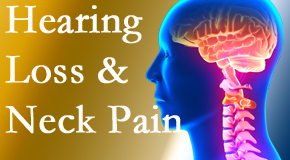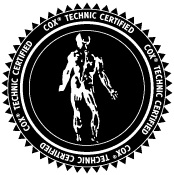Cervical Spine Related Hearing Loss and Neck Pain Relief with Chiropractic
The classic account of the first chiropractic adjustment by DD Palmer, the founder of chiropractic, involves the hearing restoration of a deaf janitor after spinal manipulation. (1) Fascinating! Today’s research reports help clarify and corroborate the connection of hearing and cervical spine pain issues. Johnson Chiropractic hears stories of improvement in Richmond chiropractic patients for seemingly unrelated things that brought them into Johnson Chiropractic for chiropractic care. Patients are delighted! Johnson Chiropractic is ecstatic for them. Let us study this side-effect of hearing loss improvement after chiropractic spinal manipulation.
THE HEARING AND CERVICAL SPINE CONNECTION
Hearing loss is not that uncommon with cervical spine issues. The connection of cervical spine and hearing has been discussed in the medical publications for decades. In 1994, one author submitted an idea of the existence of a “vertebragenic hearing disorder” that accompanies with tinnitus, a feeling of ear pressure, otalgia and deafness due to functional deficit of the upper cervical spine. He attached issues like cervical vertigo and hearing disorders in 15% of patients with cervical spine issues and hearing losses of 5 to 25 decibels in 40% of them. (2) Richmond chiropractic patients report such issues sometimes, so Johnson Chiropractic is not shocked at all.
Cervical spine issues can affect ear vessels and/or nerves resulting in hearing loss, vertigo or tinnitus. Cervical spine injuries can produce pain and limits in range of motion. The chance of hearing loss in patients with limited left rotation ability is high. Such hearing loss after a cervical spine injury is more common in men. (3) Further, there is evidence of interaction between the somatosensory and auditory brainstem structures, a pathway linking the cervical spine to hearing function. Researchers are working to find the pathway and understand better how spinal nerves like those of C2 (the second cervical spine segment) have an effect on auditory responses (hearing). They have found projections from C2 dorsal root ganglion extending to the cochlear nucleus. (4) Patients who have Kimmerle’s anomaly – an anatomical modification of the first cervical segment (C1) – often experience chronic tension-type headaches and neurosensory-type hearing loss. (5) What does this say about the connection between hearing and the cervical spine? A connection. Johnson Chiropractic considers this when caring for Richmond cervical spine pain patients who have a hearing loss or deficit.
CHIROPRACTIC HELP FOR Richmond HEARING LOSS RELATED TO CERVICAL SPINE ISSUES
Since that first chiropractic adjustment in 1895, chiropractic has recorded improvement for more patients with hearing issues. A study of 90 patients who experienced cervicogenic sudden hearing loss reported that those who had chiropractic treatment in addition to routine medical care recovered their hearing and eased their neck pain effectively after 10 days of care. (6) A case of hearing loss and tinnitus linked to cervicogenic neck pain in a female patient whose hearing and tinnitus were improved after undergoing chiropractic spinal manipulation treatment. On a scale of 0 (no problem) to 10 (complete impairment), she rated her problems a 7 at the beginning of care and a 1 at the conclusion of 5 months of care. An audiogram was normal, too. (7) These are pleasing outcomes that Richmond hearing loss patients could embrace! Johnson Chiropractic is prepared for the opportunity to help!
CONSIDER Johnson Chiropractic FOR RELIEF
Listen to this PODCAST about how Cox Technic relieves cervical spine related neck pain and shoulder pain.
Schedule a Richmond chiropractic visit to explore how Johnson Chiropractic may help ease cervical spine issues, neck pain and even potentially cervical spine related hearing loss.


